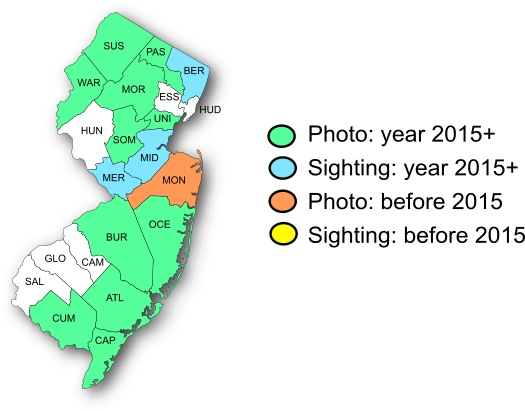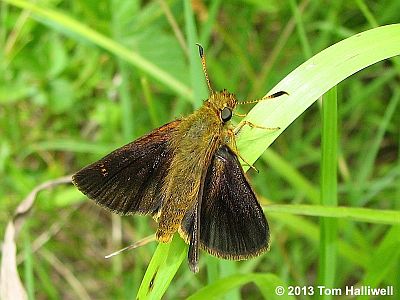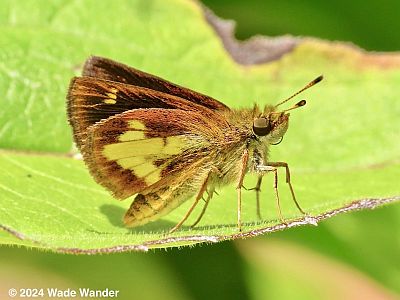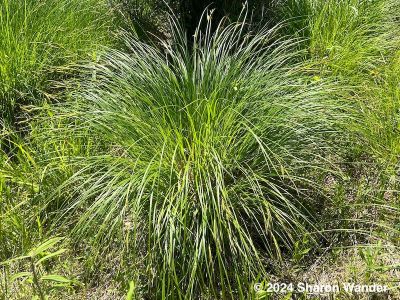New Jersey Butterfly Club
A chapter of the North American Butterfly Association (NABA)
Mulberry Wing
Poanes massasoit
Identification: Very small—FW ≤0.6". Above: Male FW and HW usually completely dark blackish-brown, with purplish ("mulberry") sheen when fresh; may have pale "bracelet" and two small, central marks. Female also dark above, with more-prominent central spots on FW and variable pale marks in HW. Below: Both sexes have rusty-brown HW with bold, yellow mark shaped like an airplane. Individuals completely suffused with rusty-brown below are very rare in North Jersey, but frequent in South Jersey. Similar skippers: Often found with Black Dash, which is similar in color below but with a vague, chunky-shaped mark on the HW rather than a bold, airplane-shaped mark.
NJ Status and Distribution: Resident. Rather uncommon and local in North and Central Jersey, but can be locally common. Less common and more local on the Coastal Plain.

Habitat: Tussock Sedge (Carex stricta) marshes.
Flight Period: One brood in North Jersey from late June to late August. Extreme dates: North Jersey 6/23—8/26; South Jersey 6/16—7/31.
Caterpillar Food Plant: Tussock Sedge (Carex stricta).
Overwintering Stage: Unknown.
Good Locations: High Point SP, Adiguzelli Tract, Lord Stirling Park, Lakehurst Bog and RR tracks, Peaslee WMA, Beaver Swamp WMA.
Comments: Partial to nectaring at Heal-all (Prunella vulgaris)—a native species of mint. Along the Tuckahoe River, it commonly nectars on Pickerelweed.


